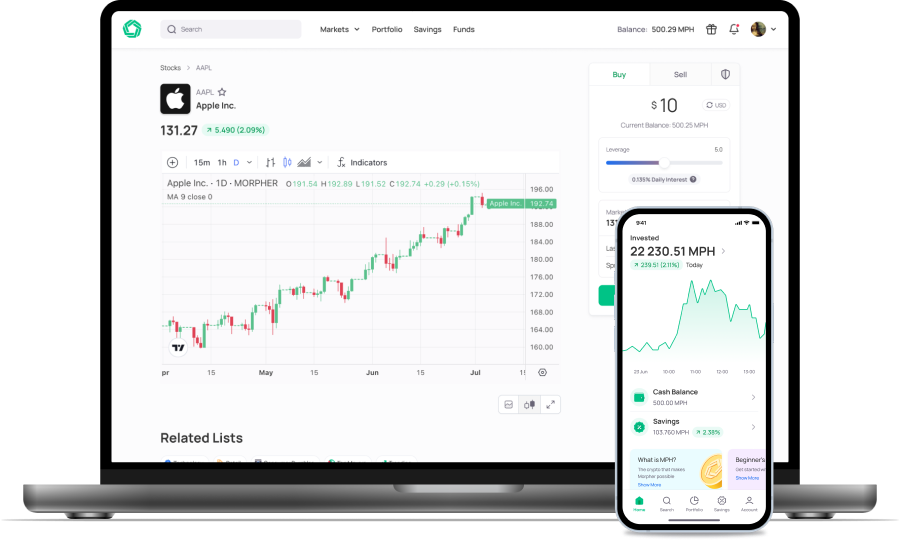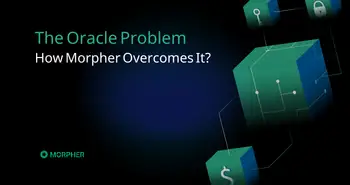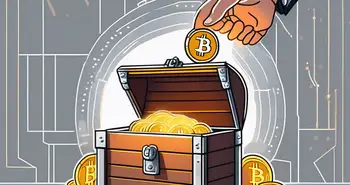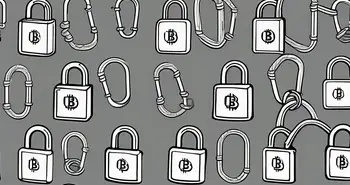What Is Double Spending: The Problem and How Blockchain Prevents It
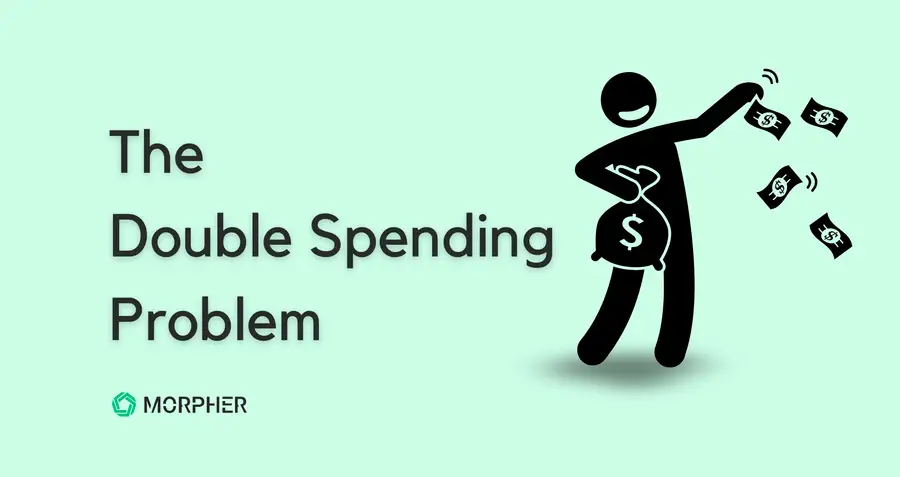
Imagine paying for your morning coffee with Bitcoin, only to turn around and use the same Bitcoin to buy a book online. In the physical world, this is impossible. Once you hand over cash, it’s gone. But in the digital world, where everything is just data, what stops someone from duplicating their coins and spending them twice?
This problem, known as double spending, is one of the fundamental challenges of digital currencies. If left unchecked, it could destroy trust in cryptocurrencies, making them unreliable for transactions. But thanks to blockchain technology, double spending is largely a solved issue.
Let’s break it down: why is double spending a problem, how does blockchain prevent it, and what can traders and investors learn from recent examples.
Why Double Spending Is a Problem
At its core, double spending is a form of fraud where the same unit of digital currency is spent more than once. Unlike physical cash, which exists in only one place at a time, digital assets are just data. Without a proper system in place, someone could copy and send the same unit of crypto to multiple recipients before the network registers the first transaction.
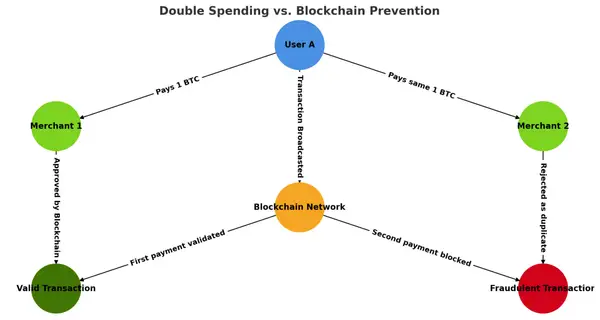
This problem is especially critical in decentralized systems, like Bitcoin, where there is no central authority (like a bank) verifying transactions. In traditional, centralized payment systems, this issue is handled by banks or payment processors that maintain a central ledger. They validate and update transactions in real-time, ensuring that the same money isn’t spent twice. If fraudulent activity is detected, they can block or reverse transactions. However, this requires trusting a third party to oversee and manage the system.
In contrast, blockchain eliminates the need for a central authority by relying on decentralized consensus mechanisms to verify transactions. Instead of a single entity controlling the ledger, transactions are recorded on a distributed network, making fraud like double spending nearly impossible without overwhelming the entire system.
Why Should You Care?
- If double spending were possible, crypto’s value would collapse because people would stop trusting transactions.
- Businesses accepting crypto payments could get scammed, receiving funds that are later invalidated.
Unlike traditional exchanges, Morpher runs on a blockchain-based trading system that eliminates counterparty risks and ensures all transactions are immutable. No more worrying about transaction rollbacks or double spending threats. Youur trades are secure, instant, and commission-free.
Trade crypto on Morpher without the risk of double spending.
How Blockchain Prevents Double Spending
So, how does the blockchain solve this problem? The answer lies in its core features: decentralization, consensus mechanisms, and immutability.
1. Transaction Verification Through Consensus
When you send Bitcoin (or any cryptocurrency), your transaction is broadcasted to the network. But it isn’t immediately final. First, it needs to be confirmed by multiple participants (miners or validators) through a consensus mechanism.
- Proof-of-Work (PoW): In Bitcoin’s case, miners solve complex cryptographic puzzles to add new transactions to the blockchain. Since mining is energy-intensive and expensive, an attacker would need enormous computing power to rewrite the chain and approve double spending, making it nearly impossible.
- Proof-of-Stake (PoS): Instead of mining, validators in PoS networks (like Ethereum) lock up a certain amount of crypto as collateral. If they attempt fraud, they lose their stake, which disincentivizes attacks.
Here, you’ll find a more in-depth comparison of PoW and PoS.
2. Irreversibility: The Power of Block Confirmations
Each new transaction is recorded in a block that links to the previous one, creating a chain,hence, blockchain. Once a transaction is included in a block, altering it requires changing all subsequent blocks, which grows exponentially difficult over time.
For added security, most networks recommend waiting for multiple block confirmations before considering a transaction final. On Bitcoin, for example:
- 1 confirmation is fast but risky.
- 3–6 confirmations are generally considered safe.
- High-value transactions may require 12+ confirmations for near-absolute security.
Cases of Double Spending Attacks
While blockchain is designed to be highly secure, some cryptocurrencies have fallen victim to double spending attacks, particularly through a method known as a 51% attack.
A 51% attack occurs when a single entity gains control of more than half (51%) of a blockchain’s mining power (hash rate) or staked tokens. With this majority control, attackers can manipulate transaction history, reverse payments, and execute double spending. They do this by creating an alternative version of the blockchain where their fraudulent transactions are removed, allowing them to spend the same funds multiple times.
These attacks are more common on smaller Proof-of-Work (PoW) blockchains, where mining power is less distributed, making it easier for a single entity to dominate. While major blockchains like Bitcoin and Ethereum have high security and decentralization, smaller networks have experienced successful 51% attacks, causing significant financial losses and shaking investor confidence.
Here are some notable real-world cases where double spending attacks have impacted the crypto space:
Example 1: The Bitcoin Gold Attack (2018)
In 2018, Bitcoin Gold (BTG), a smaller Bitcoin fork, suffered a 51% attack where an attacker gained control of the majority of its mining power. The attacker used this control to create an alternate version of the blockchain, allowing them to reverse transactions and double spend millions of dollars worth of BTG.
💥 Impact: Exchanges that accepted BTG without waiting for enough confirmations were hit the hardest, losing around $18 million.
Example 2: The Ethereum Classic Attack (2019)
In January 2019, Ethereum Classic (ETC) suffered a deep chain reorganization attack, leading to a double spending of over $1 million. Attackers spent ETC on an exchange, withdrew it, then rewrote the blockchain to erase the original transaction, essentially keeping their crypto while also getting their funds back.
💥 Impact: This exposed the vulnerability of smaller PoW blockchains, highlighting the need for stronger security measures.
Example 3: The Verge Crypto Attack (2018)
Privacy-focused cryptocurrency Verge (XVG) was attacked multiple times in 2018. Exploiters manipulated the network’s mining process, allowing them to generate thousands of Verge coins per second, which they then spent fraudulently.
💥 Impact: This led to significant devaluation of Verge’s price, shaking investor confidence and raising concerns about the security of low-hash-rate networks.
These cases demonstrate how 51% attacks pose a real threat to poorly secured blockchains, emphasizing the importance of network decentralization, high confirmation thresholds, and strong consensus mechanisms to prevent double spending.
How Traders and Investors Can Protect Themselves
While Bitcoin and Ethereum have strong security measures, double spending attacks are more likely on smaller, less-secure blockchains. If you’re trading or investing in crypto, here’s how to stay safe:
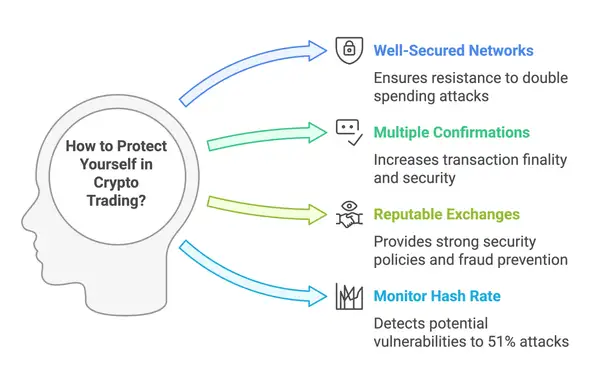
1. Stick to Well-Secured Networks
Bitcoin and Ethereum are highly resistant to double spending thanks to their massive mining/validator networks. Smaller chains with lower security (especially PoW-based ones) are more vulnerable.
2. Wait for Multiple Confirmations
If you’re receiving payments in crypto, always wait for several block confirmations before considering a transaction final. The more confirmations, the harder it is for an attacker to reverse it.
3. Use Reputable Exchanges and Platforms
Exchanges with strong security policies often require more confirmations for withdrawals to prevent double spending-related fraud. Avoid platforms with weak security or low liquidity.
4. Keep an Eye on Network Hash Rate
If a blockchain’s mining power suddenly drops, it becomes more vulnerable to 51% attacks. Websites tracking hash rates can help you assess a network’s security.
Double Spending FAQ
What is double spending?
Double spending is when the same digital asset is fraudulently spent more than once. This is a risk unique to digital currencies, as they exist as data and can be copied if not properly secured.
How does blockchain prevent double spending?
Blockchain prevents double spending by using decentralized consensus mechanisms like Proof-of-Work (PoW) and Proof-of-Stake (PoS). Transactions are verified by multiple network participants and recorded on an immutable ledger, ensuring they cannot be altered or duplicated.
What is a 51% attack, and why is it dangerous?
A 51% attack occurs when a single entity gains control of more than half of a blockchain’s mining power, allowing them to manipulate transaction history and double spend coins. Smaller blockchains with lower security are more vulnerable to this type of attack.
How can traders and investors protect themselves from double spending?
Wait for multiple confirmations before considering a transaction final.
Use reputable exchanges with strong security measures.
Stick to well-secured networks like Bitcoin and Ethereum, which are highly resistant to attack
A Secure Trading Alternative: Morpher
On Morpher, trades are executed through a trustless smart contract system, eliminating risks associated with centralized exchanges and 51% attacks. With infinite liquidity, zero trading fees, and no reliance on traditional order books, Morpher provides a next-generation crypto trading experience.
Sign Up Now and Claim Your Free Trading Bonus!

Disclaimer: All investments involve risk, and the past performance of a security, industry, sector, market, financial product, trading strategy, or individual’s trading does not guarantee future results or returns. Investors are fully responsible for any investment decisions they make. Such decisions should be based solely on an evaluation of their financial circumstances, investment objectives, risk tolerance, and liquidity needs. This post does not constitute investment advice.

Painless trading for everyone
Hundreds of markets all in one place - Apple, Bitcoin, Gold, Watches, NFTs, Sneakers and so much more.

Painless trading for everyone
Hundreds of markets all in one place - Apple, Bitcoin, Gold, Watches, NFTs, Sneakers and so much more.
